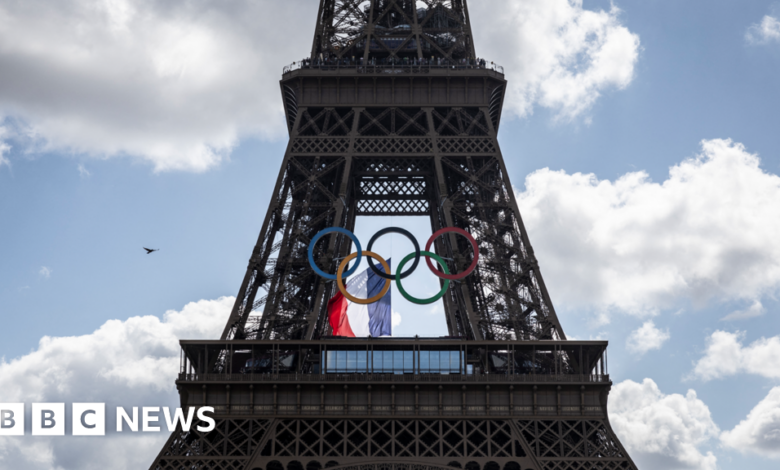Controversy over Paris mayor’s plan to keep Olympic rings on Eiffel Tower

Paris Mayor Anne Hidalgo has sparked controversy by announcing she wants to keep the Olympic symbol on the Eiffel Tower after the Summer Games are over.
“The decision is mine and I have the IOC’s consent. [International Olympic Committee]”, she shared with Ouest-France newspaper at the weekend.
“So yes, they [the rings] will stay at the Eiffel Tower,” she added.
Some Parisians support the move, but others – including heritage campaigners – say it is a bad idea and will “desecrate” the French capital’s iconic monument.
The five rings – 29m (95ft) wide, 15m high and weighing 30 tonnes – were installed on the Eiffel Tower before the Paris Olympics opened on 26 July and are expected to be dismantled after the Paralympics closing ceremony on 8 September.
But Ms Hidalgo said she wanted to keep the alternating rings of blue, yellow, black, green and red representing the five continents.
She added that the current rings – each 9m in diameter – were too heavy and would be replaced with lighter versions at some point.
The Socialist mayor also declared that “the French have fallen in love with Paris again” during the Olympics, and she wanted “this festive spirit to be maintained”.
Some Parisians as well as tourists to the French capital have backed the mayor.
“The Eiffel Tower is beautiful, the circles add color. It’s great to see it like this,” a young woman, who identified herself as Solène, told the website France Bleu.
But local resident Manon said it was “a really bad idea”.
“It’s a historical monument, why desecrate it with the rings? It was useful for the Olympics but now it’s over, we can move on, maybe we should remove them and return the Eiffel Tower to what it was before,” he told France Bleu.
Social media user Christophe Robin said Ms Hidalgo should have consulted Parisians before carrying out her plan.
In a post on X, he recalled that the Eiffel Tower once featured a Citroën advertisement in 1925-36.
The Eiffel Tower was built in 1889 for the World’s Fair. The wrought iron lattice tower was initially heavily criticized by Parisian artists and intellectuals – but is now widely regarded as a symbol of the “City of Light”.
Ms Hidalgo, who has run Paris since 2014, is known for her bold – and sometimes controversial – reforms.
Under her tenure, many streets in the city, including the banks of the Seine, were pedestrianized.
Last year, She won a convincing victory in the city’s referendum on a ban on electric scooter rentals. However, less than 8% of eligible people turned out to vote.
In February, Ms Hidalgo won again after Parisians approved a sharp increase in parking fees for sport utility vehicles (SUVs).
But both motoring groups and the opposition have criticised the plans, saying the SUV classification is misleading as many family cars would be affected.
French Environment Minister Christophe Béchu said at the time that the surcharge amounted to “punitive environmentalism”.
And just before the Paris Olympics, Ms. Hidalgo and other officials went down to the Seine to demonstrate that the river was safe to swim in.




